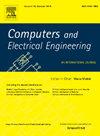A dual-path interactive denoising autoencoder for removing mixed noise in multi-lead electrocardiogram signals
IF 4
3区 计算机科学
Q1 COMPUTER SCIENCE, HARDWARE & ARCHITECTURE
引用次数: 0
Abstract
Denoising of dynamic electrocardiography (ECG) is a hotspot in ECG processing. Existing denoising methods mainly target single-lead signals or single noise sources, with limited research addressing mixed noise across multiple leads. Based on the time-frequency characteristics of common noise in ECG acquisition, this study introduces the Dual-Path Interactive Denoising Autoencoder (DP-IDAE). One pathway utilizes multi-scale convolutional kernels to extract local features, while the other employs bidirectional long short-term memory to capture global features. An interactive transmission mechanism facilitates information exchange between pathways. Experimental results demonstrate DP-IDAE's superior denoising performance across seven types of noise, including single and mixed noise composed of baseline wander (BW), muscle artifact (MA), and electrode motion (EM). In the complex noise environment of BW+EM+MA at -6 dB, theand PRD still achieve 8.3 dB and 31.87 %, respectively. Additionally, the study investigates the relationship between denoising effects and signal similarity of different lead ECGs. It concludes that a higher similarity between lead signals leads to better denoising performance, especially for leads I, II, AVF, and V4-V6, where the denoising effect is more significant. From both time-domain and frequency-domain perspectives, DP-IDAE effectively removes local and global noise by leveraging the advantages of dual pathways.
求助全文
约1分钟内获得全文
求助全文
来源期刊

Computers & Electrical Engineering
工程技术-工程:电子与电气
CiteScore
9.20
自引率
7.00%
发文量
661
审稿时长
47 days
期刊介绍:
The impact of computers has nowhere been more revolutionary than in electrical engineering. The design, analysis, and operation of electrical and electronic systems are now dominated by computers, a transformation that has been motivated by the natural ease of interface between computers and electrical systems, and the promise of spectacular improvements in speed and efficiency.
Published since 1973, Computers & Electrical Engineering provides rapid publication of topical research into the integration of computer technology and computational techniques with electrical and electronic systems. The journal publishes papers featuring novel implementations of computers and computational techniques in areas like signal and image processing, high-performance computing, parallel processing, and communications. Special attention will be paid to papers describing innovative architectures, algorithms, and software tools.
 求助内容:
求助内容: 应助结果提醒方式:
应助结果提醒方式:


